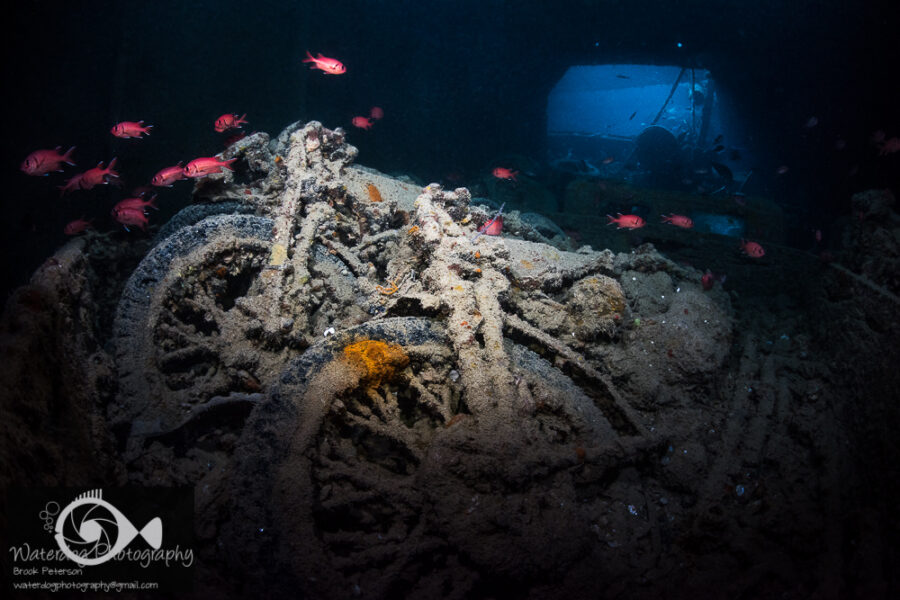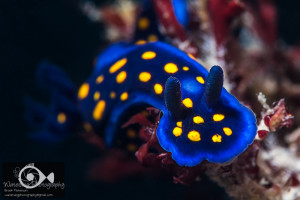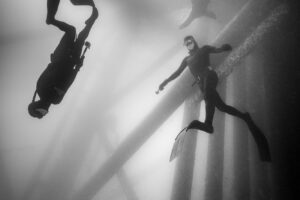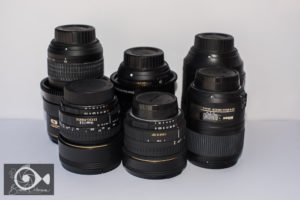Shipwrecks conjure up a sense of adventure and mystery in the hearts of people everywhere. As a scuba diver, it is one of the main attractions that entices people to learn to dive. I have done a little bit of wreck diving, but I will admit, my attention span was only good for about 10 minutes before I started looking for the reef. Well, that all changed recently when I had the opportunity to dive some of the wrecks in the Red Sea.
Shaab Abu Nahas reef is one of the premier dive sites in the Red Sea as it has claimed no less than five cargo ships, which lay on the reef’s northern slope. One of these ships, the Carnatic sunk in 1869 and was carrying gold, cotton, and wine. It is one of the oldest wrecks in the Red Sea and a favorite for scuba divers. The wood has rotted away leaving a skeletal framework that is beautiful, and full of marine life.

The stern of the Carnatic still has the rudder in place, and on the bow of the ship, you can see through the porthole that once held the figurehead.


The Giannis D is probably one of the most famous wrecks on this site. At nearly 100 meters long, and with a cargo full of sawn softwood, she hit the reef and sunk in April of 1983.

Sunk in 1981, the Chrisoula K is also known as the Tile wreck as it was carrying a cargo of Italian tile. It was a very interesting wreck to explore. The tool room has a lathe and standing drill press.

There is a kiln, and the cargo hold still houses stacks of Italian tile.


The other two wrecks both sunk between 1979 and 1983. It is interesting that the Carnatic was alone for more than 100 years before the reef claimed the other four ships in quick succession.
Perhaps the most famous shipwreck in the world, and certainly the most famous in the Red Sea is the Thistlegorm. This ship was a cargo ship during the second world war and was sunk while at anchor by the Germans. The cargo holds contain Bedford Trucks, armoured vehicles, motorcycles, guns, and other supplies. There were even two railway cars carried on the deck. One of these has fallen off and sits next to the wreck in 100fsw.


The wheel of the train that sits next to the Thistlegorm wreck.

While the cargo of this ship is most interesting, the deck is also beautiful and fascinating to explore. The image below is a picture of the winch that sits on the bow of the ship.

The story that these shipwrecks tell are enough to keep divers coming back for more. I know they made a wreck diver out of me. Please visit my “Red Sea” Gallery at waterdogphotography.com for many more images taken of wrecks and marine life in the Red Sea.






